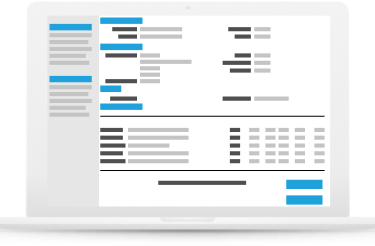While it might seem like a fairly straightforward affair, implementing an enterprise resource planning system (ERP system) can pose a significant challenge for businesses large and small. Complex and impacting multiple (or even all) your business units and processes, an ERP project creates an environment rife with opportunities for miscommunication, missed timeframe and budget targets, and frustrated or confused end users.
Despite these challenges, ERP implementations are not necessarily doomed to failure. With careful planning, a collaborative and consultative approach, and a thorough understanding of why ERP implementations fail, you can ensure your new ERP system integrates smoothly and effectively with your software environment, and avoid needless waste, expense, and frustration.
ERP Implementations Offer Big Benefits—and Challenges
With price tags that range from hundreds of thousands to millions of dollars, and varying degrees of complexity that can impact literally every business process within an organization, ERP implementations are serious investments designed to yield a substantial, measurable return on investment (ROI). They require careful planning, aggressive change management strategies, and a solid software implementation plan in order to have a chance of succeeding.
The rewards are rich for those who can implement a new ERP system with minimal headaches; improving decision making, centralizing data management, automating business processes, and improving compliance, competitive performance, and profitability are just a few of the potential benefits.
Yet if the rewards are many, so are the risks. Case studies show complexity, miscommunication, data quality concerns, and inadequate resources can all wreak havoc on an ERP project.
Consider these (in)famous ERP implementation failures:
- In 2012, National Grid—a gas and electric provider in the Northeastern United States—was rapidly approaching the go-live date for a new SAP implementation after three years of setbacks. Failing to activate the system would create overruns soaring into the tens of millions of dollars (which would need to be recouped with higher rates, which in turn would have to be approved by the government); turning it on too early might cripple the entire system. Complicating the matter was Superstorm Sandy, which had struck less than a week before the company’s scheduled go-live date.
In the end, National Grid activated the implementation. The resulting financial and operational chaos crippled the company and led to a successful lawsuit against Wipro, their SAP provider, who settled for just $75 million—a fraction of the losses incurred by National Grid. - The shockwaves that accompanied Revlon’s failed ERP implementation in 2016 were powerful enough to spell a financial and operational disaster. The cosmetics juggernaut had acquired Elizabeth Arden the same year, and while both companies had successful ERP implementations in their pasts, the new ERP chosen for the merged companies, SAP HANA, proved to be a complete failure. Adding to millions in lost sales and supply chain disruptions that effectively crippled an entire distribution center, the ERP implementation failure eventually led to a lawsuit filed by the company’s own shareholders.
- In 2018, grocery chain Lidl partnered with its fellow German company (and ERP giant) Systems, Applications & Products in Data Processing (SAP) to update the former’s elderly inventory management system. A tangled web of complications, customization issues, and staff led to the entire ERP implementation being scrapped—leaving Lidl €500 million in the hole.
Without a clear plan, the right tools, and right set of goals and information, even the biggest, most successful companies may find themselves struggling to achieve a successful ERP implementation.
“Before you consider any software—particularly a sizable and expensive IT project such as an ERP system—it’s critical to understand your business needs, the resources you have at your disposal, and the processes and tools you want to use to meet those needs.”
Top Reasons Why ERP Implementations Fail
Poor project management. Misalignment of goals. Lack of communication. The wrong software. No two ERP implementations fail for exactly the same reason, but the scope and complexity of balancing organizational change management and digital transformation against business needs (along with the expectations set by investors, end users, and other stakeholders) means ERP implementation projects absolutely must be executed with care, collaboration, and forethought.
Let’s take a closer look at some of the most common reasons ERP implementations fail to hit the mark:
No Single Enterprise Resource Planning Solution is a Panacea
Different areas of your organization have different business needs. And while many ERP software solutions seek to provide a universal multi-tool to address them all with equal success, chances are each department or business unit or project team will augment or modify the tools they’re given to better suit their individual workflows.
Think of it this way: while your entire organization might use the same office suite, your marketing and design teams might add standalone graphics software for mock-ups and designs they can’t create in the suite’s basic word processing or desktop publishing solutions. And over in Finance, they’re likely hungry for something more versatile and capable than a basic spreadsheet, so they look for specialized analysis and reporting tools to help improve compliance, accuracy, and speed. Everyone still shares data and uses the same communication tools, but each area has the distinct tools it needs to succeed.
The same is true for an ERP system. Some areas of your business, like procurement, may be better off with an additional purpose-built solution that integrates with (rather than replaces) your current system (or the new ERP system you’re currently considering). Adding a customized, cloud-based procurement solution like PurchaseControl can help you optimize all your business processes and provide the digital transformation tools you need to support other areas of your business that rely primarily on the main ERP system.
Unclear or Insufficient Planning
Before you consider any software—particularly a sizable and expensive IT project such as an ERP system—it’s critical to understand your business needs, the resources you have at your disposal, and the processes and tools you want to use to meet those needs. Zero needs analysis will leave you flying blind, and not having a clear, documented outline of your implementation plan is a good way to crash before your new system ever gets off the ground.
Misaligned Goals and Solutions
Finding the “perfect fit” for your business needs and goals (especially off the shelf) is pretty unlikely. Choosing a system that’s not a good fit for the sake of convenience or cost and trying to fix it down the road is a recipe for delayed disaster.
A Haphazard Implementation Team
Like the Justice League or the Avengers, an implementation team requires the right members to save the day. Trying to throw together a team from whoever’s available or without strategic consideration for the skills required can quickly lead to problems of superhuman proportion. An unfocused team, or one that’s stretched too thin, can be just as dangerous.
Poor Communication and Collaboration with Your Supplier
Whether it’s SAP, Oracle, Microsoft Dynamics, or a purpose-built application like PurchaseControl, your software implementation’s success is built not just on features and price point but your relationship with your software vendor. If you don’t communicate your needs and requirements clearly and consistently, you may not get the solution you paid for.
Plus, noncommunicative approaches and failing to take advantage of training and education tools provided by your vendor can bring your implementation to a grinding halt while everyone scrambles to learn the system and master the tools while still trying to do business as usual.
Failing to Secure Buy-In
An ERP implementation is a massive undertaking. It can change some or all of the ways your team works on a daily and long-term basis. So if you fail to engage with and educate your entire organization, from the C-suite down, about the benefits and goals and importance of the new system, flipping the “on” switch during rollout may plunge your entire company into chaos rather than competitive growth.
Best Practices for a Successful ERP Implementation
Whether you’re an all-in-one shopper, building your perfect ERP module by module, or updating your current system with some new digital tools, you can help ensure the ERP solution you choose is a good fit—and successfully implemented!—by following a few best practices.
- Begin with needs analysis. Understanding where you are, where you want to go, and the resources, budget, and time frames at your disposal will help you develop a winning implementation plan and choose both a software vendor and an ERP solution that will help you reach your goals.
- Build a plan and set clear goals. Don’t be afraid to develop multiple potential plans. Your project manager should carefully consider your resources, goals, and needs, and find the path that leads to a successful implementation—whether that means doing things all at once or in stages as time and budget permit.
- Focus on communication and collaboration. Be upfront with potential suppliers about your needs and expectations. Have your technical and operational ducks in a row when reviewing potential software solutions, and work closely with your supplier to develop a system that addresses potential roadblocks from the jump.
- Build a team of experts. Large, complex projects require special skills and knowledge to set goals, track, target, and hit benchmarks, and stay the course to a successful conclusion. Assemble your “avengers” from Finance, Production, Inventory, the IT department, Operations—if their teams will be using the system, they need a place at the table and a chance to put their expertise to work in building an ERP system that’s optimized for your organization as a whole.
- Build a dedicated team of experts. Expertise alone won’t get the job done—especially if your experts are spread thin across a slew of other projects. Secure the time and resources necessary to free team members from other concerns for the duration of the project to ensure it stays on track and gets the full benefit of their skills and wisdom.
- Choose the right user adoption strategies. Engage your end users early in the process. Solicit feedback and build excitement through education and training.
- Choose the right ERP solution and supplier for your Define and document the features you need and expect. Evaluate potential ERP vendors not just on those features, but their ability to help you customize their product to fit your needs, provide training and educational materials to support organizational change management and user adoption, and the long-term potential they offer for future upgrades, changes, or new projects.
- Focus on data integrity and management. In the age of Big Data, you’re only as smart and strategic as the insights you collect from your datasphere. If your new software doesn’t “play nice” with your current system, or doesn’t integrate at all, it’s a bug, not a feature. Ideally, you’ll choose a cloud ERP that offers you real-time, role-appropriate access to all your data—and ensures that data is complete, accurate, and fully visible. You rely on data for decision making, strategic planning, and a lot more, so it pays (literally!) to invest in an ERP solution that lets you manage your data with optimal efficiency and transparency.
Don’t Let ERP Implementation Failure Derail Your Business
It can be truly daunting to face the complexity and scale of an ERP implementation. But by understanding why ERP projects so often fail, and ensuring you’re following best practices, you can increase the odds of a successful ERP implementation and leverage the power of digital transformation to build value, cut costs, and increase your company’s productivity, profits, and performance.
Seamlessly Integrate Powerful Procurement Tools with Your ERP System with PurchaseControl
Find Out How








